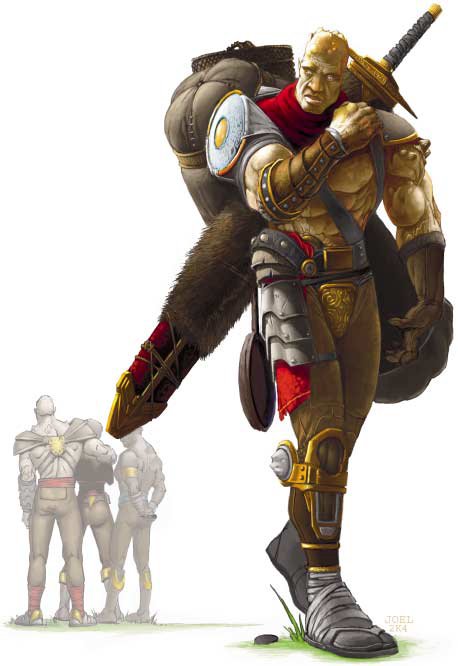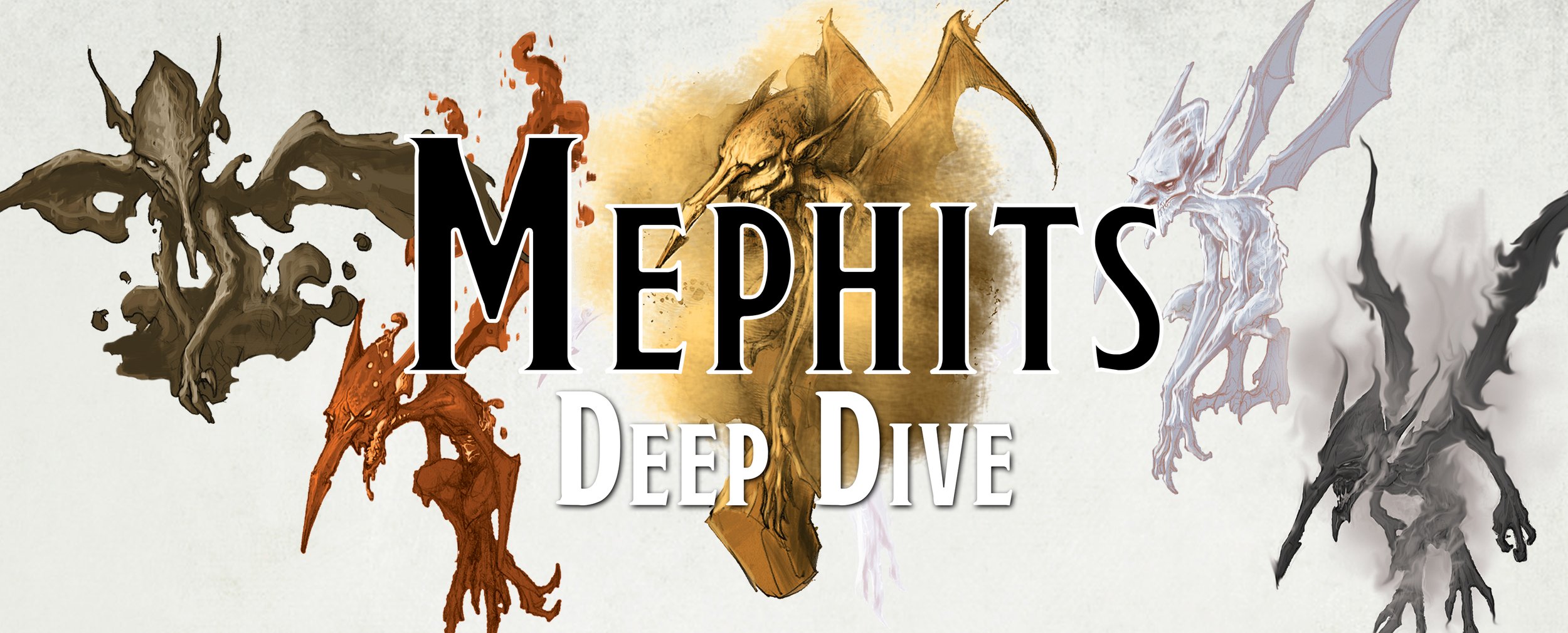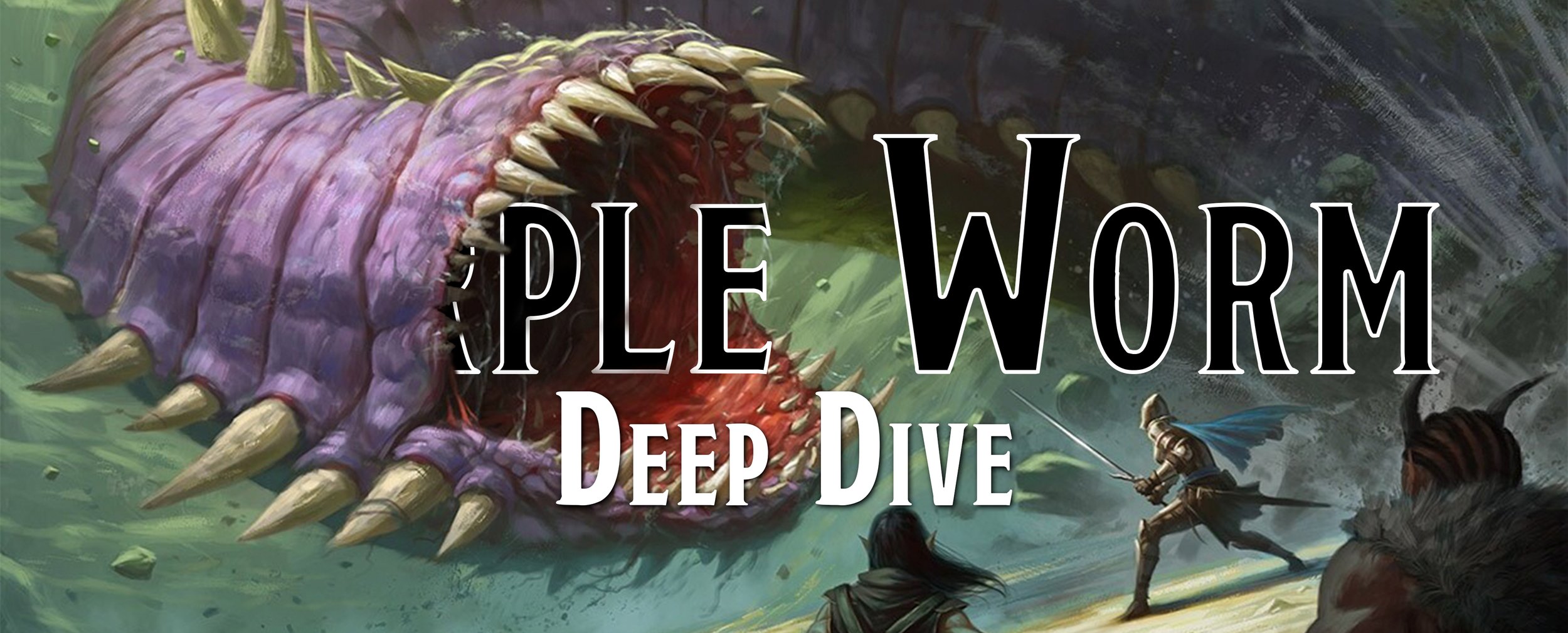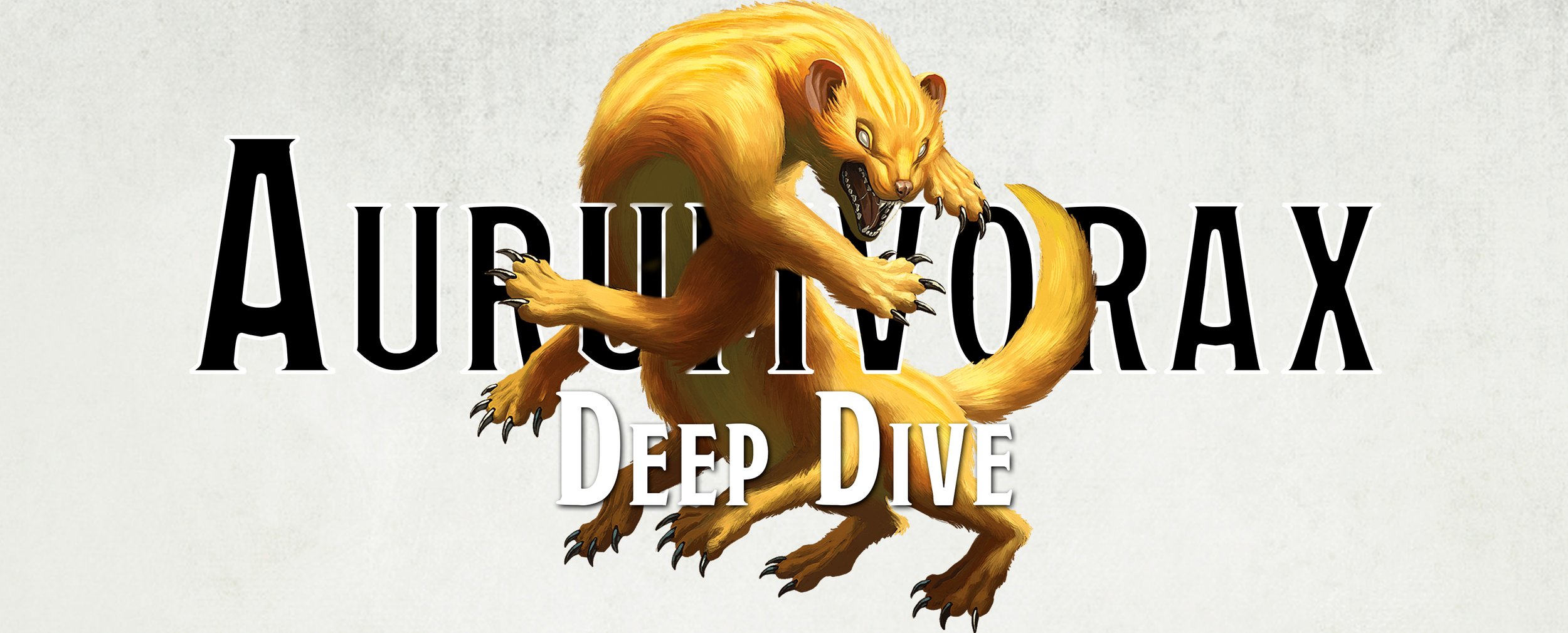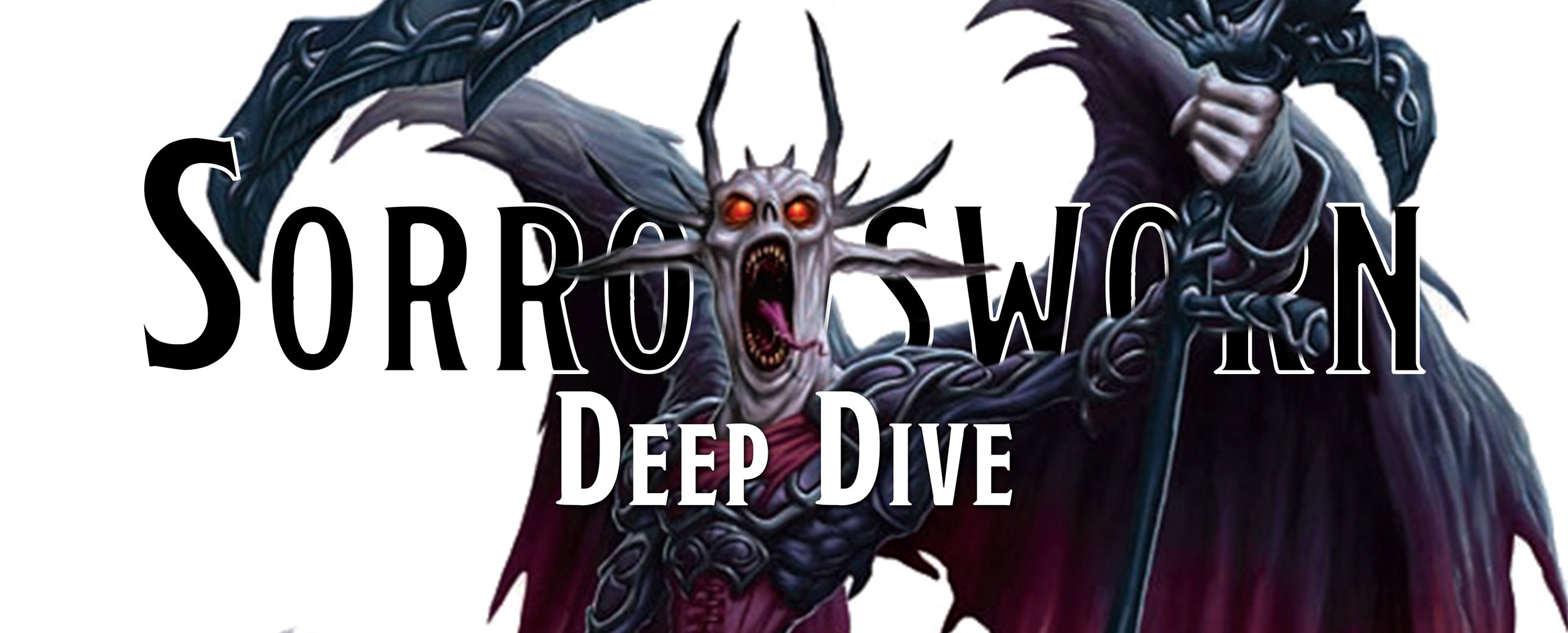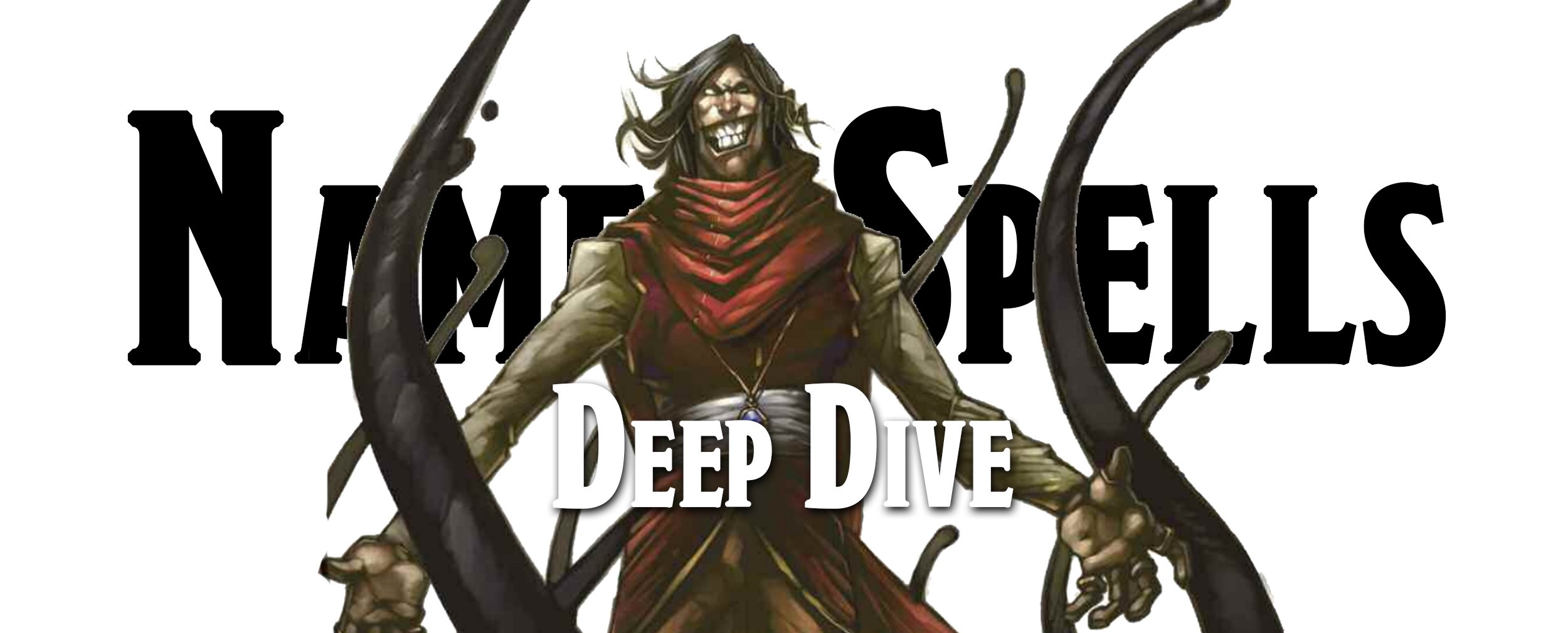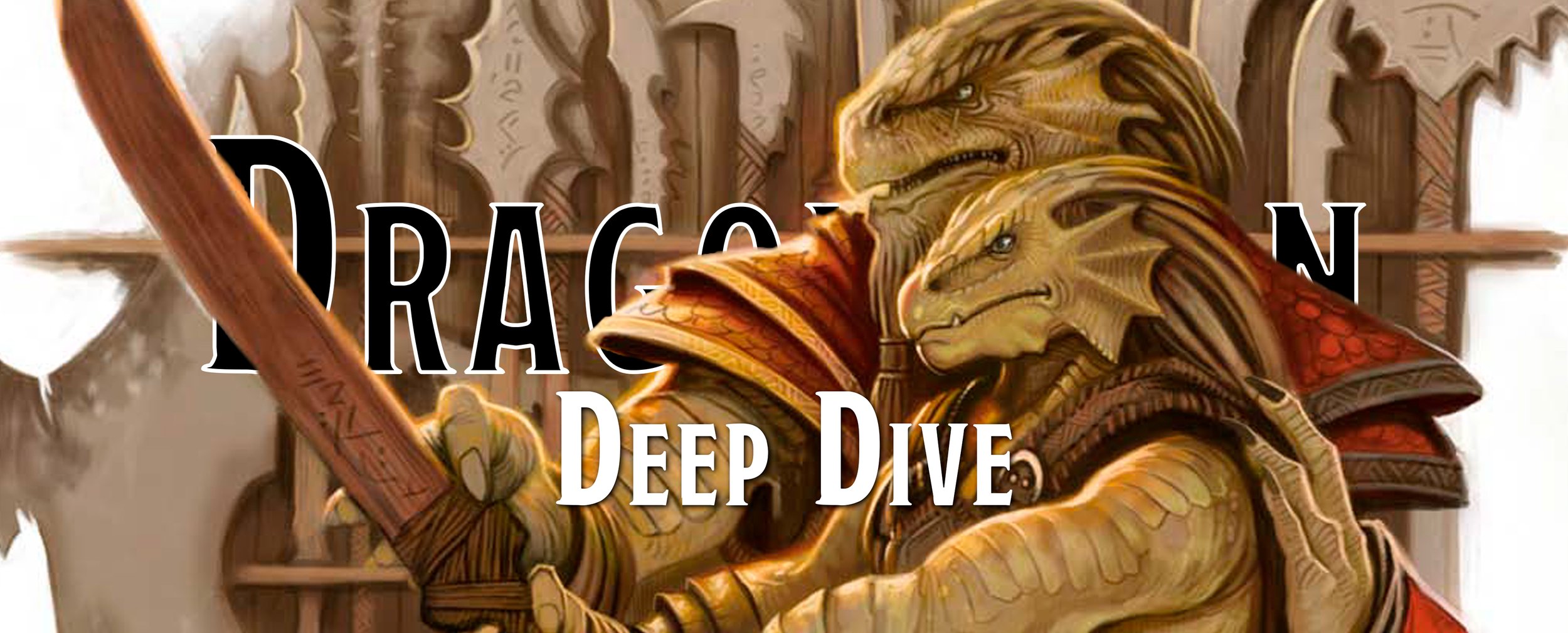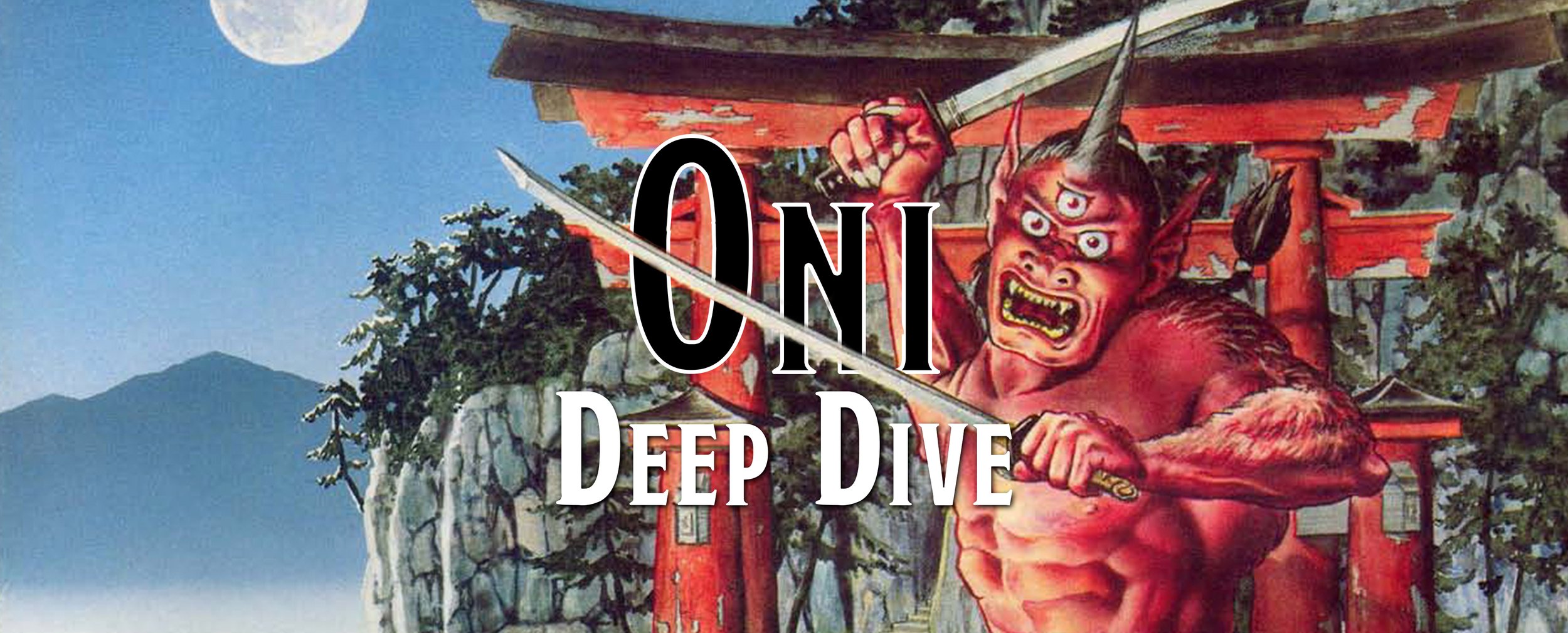Deep Dive - The Goliath
Don’t be fooled by a Goliath’s appearance. These glorious creatures are not mindless idiots, only good for wanton carnage and destruction, regardless of what Grog from Vox Machina portrays them as. Sure, most players who pick the Goliath as their race will pick the barbarian as their class, but there are plenty of Goliuath druids, fighters, and bards in the mountains. They are a nuanced race of wanderers who stand proud atop the mountaintop. Let’s waste no more time and dive into our new favorite race, the Goliath.
3e - Goliath
Stat Bonuses: +4 Strength, +2 Constitution
Stat Penalities: –2 Dexterity
Ability Bonuses:+2 bonus on Sense Motive
Special Abilities: Powerful Build, Mountain Movement, Acclimated
Languages: Common, Gol-Kaa, Dwarven, Giant, Gnoll, and Terran
Favored Class: Barbarian
Races of Stones, 2004 Wizards of the Coast
The Goliath is first found in the sourcebook, Races of Stone (2004), and are a departure from the ‘standard’ races we all know and love. At eight feet tall, the Goliath towers over halflings, gnomes, and dwarves and also looks down upon humans and half-orcs, the latter previously being the tallest playable race. Goliaths have gray skin with mottled patches of dark gray, creating a unique pattern on each Goliath, which is one of the reasons why they choose to wear little clothes. They refuse to hide who they are from others, and see Goliaths who obscure their markings as trying to hide their fate or obscure who they are.
In addition, they have lithoderms, small bone growths that are as hard as stone on their skin. These growths can be found across their body with many forming on their arms, shoulders, and torso, and even along their eyebrow ridge, giving them quite a stony countenance. Some Goliaths will embed small gems in these boney protrusions, adding a bit of glitz.
Races of Stones, 2004 Wizards of the Coast
If you are hoping to meet them, they reside almost exclusively high in the mountains, within nomadic tribes that slowly make their way up and down the mountainside. Strength is their, well, their strength, and being from the mountains, they are tough as hell with a natural bonus to their Constitution. While you would think they might be quite nimble or graceful as they clamber up and down sheer cliff faces, they suffer a penalty to their Dexterity.
To continue looking at their game statistics, before we jump into Goliath culture, they gain more traits focused on their raw size. Their Powerful Build features let them carry all your loot as if they were a creature one size larger, so about twice as much as someone who has the same Strength score as them. Think of them as a giant, walking personal bag of holding. The attribute also comes in handy when making various skill checks, like if they were to be knocked prone or shoved. In addition, since they are often found quite high up a mountain, they don’t suffer from high altitude and are quite capable of negotiating mountain hazards.
Races of Stones, 2004 Wizards of the Coast
We've covered that they live in the mountains moving from place to place, feeding their families, and hunting for game, but there is so much more to them. Their entire society is based on keeping score and creating challenges so that they can keep score, but don’t take that to mean that just because they are competitive, they are asses about it. Wrestling is a favorite pastime for Goliaths, and they play sports and games almost daily. They keep score simply because they want to do better next time, not to rub it in the faces of others about how awesome they are.
Some of their favorite challenges include cliff-climb, goat ball, stubborn root, and many other games of skill, strength, and drinking copious amounts of alcohol. Cliff-climb is pretty self-explanatory, you climb a cliff and try to go faster than everyone else. Stubborn root will also be pretty familiar to our readers since it is just “king of the mountain,” but you are a Goliath, and you are perched precariously atop a boulder with everyone else trying to pull you off. The last one, goat-ball, is an interesting sport where two teams of Goliaths are leaping between a dozen high platforms of rocks, each trying to get a lumpy goat fur ball, toss it back and forth between their team, and then chuck it at their opponents. If you fall off a rock or get hit by the goat ball, you are out of the game. It is a game of elimination, with the winners knocking the other team out.
Races of Stones, 2004 Wizards of the Coast
A Goliath’s competitive spirit can seem very annoying to outsiders, as Goliaths are constantly trying to one-up each other. This thought process couldn't be farther from the truth because this type of behavior brings out the best in Goliaths. They don't hold grudges, so if a Goliath loses to another, they take it in stride and push themselves to do better next time. The person you lost to yesterday could be your teammate today. Their sense of competition also revolves around the concept of fair play. Everybody gets a turn, meaning everybody can climb the social and power ladder within their society. They find it silly that some communities' lowest person on the totem pole can't achieve personal greatness.
Now it's not all roses and sunshine living in a constant world of competition. Goliaths are never satisfied, so defeating one enemy means their next foe needs to be bigger, stronger, and better. We think that this could drive you mad or into an early grave, especially when a Goliath thinks that the dragon they just killed wasn’t strong enough and they need to go immediately and find a new one that is older, stronger, and more powerful. Of course, that brings us to what happens when a Goliath can no longer compete or when they can no longer take on harder and harder tasks. At this point, they are cast aside, kicked out of the tribe, and left to a life of exile. If they can prove their worth as contributing members of the tribe, they are allowed back into the tribe. If not, they are on their own.
Races of Stones, 2004 Wizards of the Coast
There are several roles and titles within a tribe. The Goliath Chieftain oversees everyone, assigning roles and determining when the tribe should move and when they should set up camp. Every morning, duties such as foraging, hunting, and cooking are assigned to various members of the tribe. Captains are the leaders of these daily tasks, and once they are designated, the captains then put together their team based on what their role was for the day. The other roles include the Tent-Mother and the Skywatcher. The Tent-Mother is responsible for the well-being of the newborn and young Goliaths who can not work yet. If you feel a closer connection to the spirits of nature or deities, then you might take on the role of the Skywatcher, who is the holy person of the tribe. Most often, this individual was a druid or shaman. They would consult with the gods to ensure there would be enough game and other resources available.
If you find yourself a night owl, you could instead become a Dawncaller, a watch person who is responsible for the safety of the tribe while they sleep. In the morning, the Dawncaller serves as an alarm clock, rousing the tribe with songs of the Goliath's greatness. In any society, you will face disputes, and so there are Adjudicators who act as the tribe’s judge and jury. Disputes that were particularly difficult to decide resulted in the Adjudicator creating a contest to decide the ruling. One of the final roles is the Lamentor, who seemingly has a crummy job, but one of great importance within the tribe. They are responsible for determining when a Goliath is either too old or weak to be of benefit to the tribe. They consult closely with the Chieftain, go over the reason for their decision, and create a song or poem telling of the accomplishments of the now ex-tribe member that they exile from the tribe.
Races of Stones, 2004 Wizards of the Coast
Since their entire society revolves around fair competition, it should be no surprise that these creatures are typically lawfully aligned. They do pray to gods, and Kavaki, the Ram Lord, is their primary deity. It is said that he watches over Goliaths high up in the mountains, keeping track of them and providing them with food during the coldest months. When it comes to other races, Goliath gets along with almost everyone. Humans are respected if they wander into their mountain, and dwarves are revered for their skills in crafting weapons.
And what about those races they tower over? It turns out that Goliaths find halflings and gnomes curious species and respect them because of their lightning-quick reflexes. Elves freak out the average Goliath as they can't comprehend living that long. When you have a chance of falling off a cliff every day, it is hard to imagine being alive for hundreds of years or seeing five generations of your family. Orcs and goblins are viewed as troublemakers, though they’ll trade with them when they aren’t avoiding them.
Goliaths are discussed briefly in the sourcebook Champions of Valor (2005), where they might follow the path to becoming a Valorous Hero, becoming the envy of all other Golaiths in the tribe. It’s here we learn Goliaths have a friendly rivalry with the Earth Gensasi, who they view as a smaller cousin. Then again, isn’t almost every humanoid race going to be a smaller something to the Goliath?
Races of Stones, 2004 Wizards of the Coast
4e - Goliath
Racial Traits
Average Height: 7´ 2˝–7´ 8˝
Average Weight: 280–340 lb.
Ability Scores: +2 Strength, +2 Constitution
Size: Medium
Speed: 6 squares
Vision: Normal
Languages: Common, either Dwarven or Giant
Skill Bonuses: +2 Athletics, +2 Nature
Mountain’s Tenacity: You have a +1 racial bonus to Will.
Powerful Athlete: When you make an Athletics check to jump or climb, roll twice and use either result.
Stone’s Endurance: You have the stone’s endurance power.
Player’s Handbook 2, 2009 Wizards of the Coast / Steve Argyle
The Goliath appears as a playable race in Player’s Handbook 2 (2009) in March, and then just two months later appears as a monster to fight in Monster Manual 2 (2009). As a playable race, the Goliath does not change very much, keeping most of their lore from before, though there is a lot less of it. They're tall, strong, covered in dark markings unique to each Goliath, have lithoderms, and still reside high in the mountains. They are fearsome and powerful, with a strong competitive streak that makes them want to be better and do better every day that they go adventuring.
Looking at their mechanics, it’s not surprising that they are quite adept at jumping and climbing, able to roll two d20s and take the higher result when making such checks. In addition, once per encounter, they can use their stone’s endurance ability to resist damage from every attack against them until the start of their next turn. The oddest thing, to us at least, is that they gain a +1 bonus to Will saves, which seems like something that they would get to Fortitude, but we guess that that is just short-hand to say that they are stubborn and hard-headed.
The Player's Handbook also provides a Goliath racial paragon path known as the Stoneblessed, something you could pick up instead of gaining a paragon path in your class. If you follow this path, your power comes directly from the rocks, most likely from the mountains you live on. You gain bonuses to your AC, increase your reach, and deal extra damage when you critically hit your opponents. It’s all about showcasing your physical power and intimidating size with this path.
Dragon #386, April 2010 Wizards of the Coast / Sarah Stone (Fayren)
Flipping over to Monster Manual 2, we have two Goliaths to pit against our short-statured party; the Goliath Sunspeaker and the Goliath Guardian. The Sunspeaker uses the power of the yellow fiery orb in the sky to rain down fire and radiant damage upon its enemies. The Goliath Guardian is a massive beast swinging a giant sword and smashing into you, slamming you into dust. It's disappointing that there is little to no information beyond the stat blocks, especially since the Goliath hasn’t been shown much love yet.
In the article Winning Races: Goliath by Matt James in Dragon #386 (April 2010), we get some of that missing lore we were hoping for, plus more goliath specific feats and even two magic items. Unfortunately, this missing lore is focused on how outsiders exploit Goliaths by kidnapping their children and forcing them into fighting pits. Because Goliath tribes are pretty hands-off with their children once they reach a certain age, encouraging them to explore the wilderness independently, their children often wander the mountainside alone. This makes it easy for vile slavers to capture the children, brutally raise them to toughen the kids up for the fighting pits, and then eventually turn them loose in gladiatorial combat.
Dungeon 181, August 2010 Wizards of the Coast / Daarken
The best Goliath warriors will eventually win their freedom by amassing enough victories, but these Goliaths have little knowledge of their old home. Even living a ‘normal’ life now that they aren’t being forced to fight by their masters is something they struggle to comprehend. In this case, most Goliaths will join mercenary companies or rejoin gladiator games. While it isn’t exactly a great bit of lore to learn about Goliaths, it does provide another reason why your Goliath character might become an adventurer and give them a plot hook that your GM could use.
We find more Goliaths in the Dark Sun setting in the Dark Sun Creature Catalog (2010), though it starts by insulting the Goliaths by also calling them half-giants. Luckily, to make up for the moniker, we get four Goliaths; the Enforcer, Leg Breaker, Gladiator, and Kingsguard. The Enforcer and Legbreaker are massive, formidable Goliaths who will squash you if you get in their way. They dominate the battlefield through sheer brute force, rushing into battle head-first with no thought of the dangers in front of them. The Gladiator makes their living fighting in arenas and taking the lives of those who dare challenge them in this setting. The Gladiator is more thoughtful on the battlefield than the other two, using their tactical understanding to maneuver its allies while still delivering skull-crushing blows to its enemies. Our final Goliath, the Kingsuard, is the elite warrior of this group. They often serve as bodyguards and protectors of kings and high-ranking nobles. Don't be fooled by their stoic appearance. If you cross them or their ward, you'll be met with the crushing blow of their giant halberd as it smashes through defenses and into your face.
Player’s Handbook 2, 2009 Wizards of the Coast / Daniel Scott
5e - Goliath
Ability Score Increase. Your Strength increases by 2 and youre Constitution score increases by 1.
Size. Your size is Medium. (7-8 feet tall)
Speed. Your base walking speed is 30 feet.
Languages. You can speak, read, and write Common and Giant.
Natural Athlete. You have proficiency in the Athletics skill.
Stone’s Endurance. You can focus yourself to occasionally shrug off injury. When you take damage, you can use your reaction to roll a d12. Add your Constitution modifier to the number rolled, and reduce the damage by that total. After you use this trait, you can’t use it again until you finish a short or long rest.
Powerful Build. You count as one size larger when determining your carrying capacity and the weight you can push, drag, or lift.
Mountain Born. You have resistance to cold damage. You’re also acclimated to high altitude, including elevations above 20,000 feet.
Mordenkainen Presents: Monsters of the Multiverse, 2022 Wizards of the Coast
The Goliath first makes its way into the 5th edition via the Elemental Evil Player’s Companion (2015) and is reprinted in Volo’s Guide to Monsters (2016). Still incredibly tall and muscular, Goliaths have not lost their sense of competitiveness or love of games and sports. Keeping score is ever so important to them still, not only against their fellow tribespeople but against themselves. The will to always try to do better than before remains a driving force in their lives, which can also lead to an early demise. When you’re actively searching for an ancient red dragon because the last one you killed was only an adult dragon, your life expectancy isn’t as long as other races.
There isn’t much else to go off. Even their physical description just states that they look like they are carved from stone and that they have great physical power. There is nothing about the markings on their skin, which are shown in the artwork, so you’d be forgiven to think they are tattoos, even though tattoos are considered taboo by Goliath society. Nor do we have any information about lithoderms, the bone-stone growths on their skin, so it’s a shame that they’ve lost those physical characteristics that separated them from humans. Now they just kind of read like tall humans.
Icewind Dale: Rime of the Frostmaiden, 2020 Wizards of the Coast
The Goliath isn’t shown much love, but they do, however, appear in Icewind Dale: Rime of the Frostmaiden (2020). Considering the adventure takes place in the snowy mountain tops, it would be foolish for them not to. There are two Goliath settlements your party may want to stay the night in; Wyrmwood Crag and Skytower Shelter. Just be aware that if you stay in one location, you may draw the ire of the other settlement. Bringing the two tribes together sounds like a great side quest, doesn’t it?
Luckily, when you read about the village, and we won’t give away any spoilers, you do get some information about Goliath culture. We have the return of goat-ball, though the rules for it are rather lame since all you do is tally up everyone’s athletics or acrobatics check, and that’s it, as well as some information about how Goliaths keep griffons as pets and use them for hunting, not riding. We even have runestones that are sacred to the Goliaths, as well as information that the Goliaths love wrestling matches, even if they don’t normally take on smaller or weaker opponents. It’s a shame that all this information is so spread out across the two settlements, as it would make a wonderful section about Goliaths.
Icewind Dale: Rime of the Frostmaiden, 2020 Wizards of the Coast
There are also two new Goliath creatures; the Goliath Warrior and the Goliath Werebear. The warriors are found in both locations mentioned above. While they aren’t very exciting, we are excited to talk about the Goliath Werebear. It’s dangerous enough to have to fight an eight-foot-tall, bald warrior, but when that warrior can turn into a bear, all bets are off. Our featured werebear is named Oyaminartok. She loves to fish, and you’ll encounter her with a fishing rod on her shoulder and a line full of freshly caught trout. When in bear form, she is a humanoid polar bear with comically long arms that nearly reach her feet. Polar bears can be quite terrifying, but Oyaminartok will help out adventurers if she can. Of course, if you decide to attack her before you get a chance to talk, have fun fighting an angry polar bear.
The Goliath does get one last book they appear in, though with only two sentences devoted to their lore, you’d be foolish to hope for more information about this race. In Mordekainen Presents: Monsters of the Multiverse (2022), we get a reprint of the Goliath’s racial statistics, a reprint of their picture from all the other books, and that they are distantly related to giants and infused with a supernatural essence of their ancestors. To be frank, we’d have loved even just a single sentence if it had provided more details about their physical description so that we could see if they still have their lithoderms!
Icewind Dale: Rime of the Frostmaiden, 2020 Wizards of the Coast
So there we have it, the history of the Goliath. With the game’s history having a fascination with short playable races, the Goliath is a nice change of pace if you looking to play something taller than 5 feet. You can drive your fellow party members crazy by announcing the ‘score’ when in the heat of battle as you kill your fourth kobold. If that doesn’t appeal to you, then maybe being the first to charge headfirst into battle as a raging Goliath barbarian does. No matter your choice, the Goliath is a fun character race to consider. Just don’t call them giants.
If you enjoy our Deep Dive series, consider
supporting us on Patreon and following us on Twitter!







